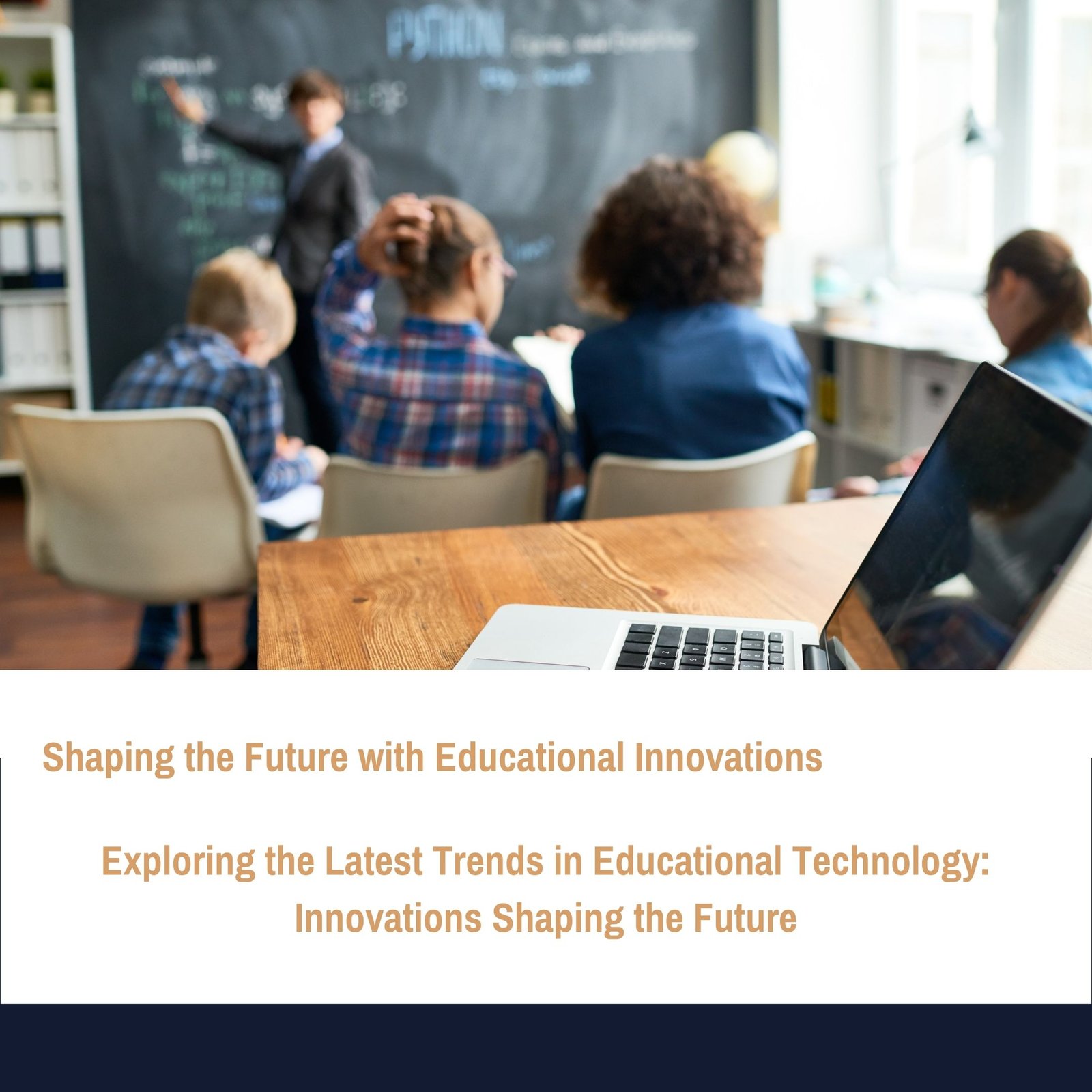Exploring the Latest Trends in Educational Technology: Innovations Shaping the Future
Education continues to evolve, driven by technological advancements. The latest trends in educational technology are transforming the way teachers teach and students learn. These innovations are making education more accessible, engaging, and effective. Let’s dive into some of the most significant trends in EdTech today.
Artificial Intelligence in Education
Artificial Intelligence (AI) is revolutionizing education. AI-powered tools personalize learning experiences, catering to individual student needs. Adaptive learning platforms use AI to analyze student performance and adjust lessons accordingly. This ensures that students receive the right level of challenge and support.
Moreover, AI chatbots provide instant assistance to students, answering questions and offering feedback. These tools enhance the learning experience by providing timely support, allowing teachers to focus on more complex tasks. Schools are increasingly adopting AI to improve educational outcomes and streamline administrative processes.
Virtual and Augmented Reality
Virtual Reality (VR) and Augmented Reality (AR) are creating immersive learning experiences. These technologies bring subjects to life, allowing students to explore complex concepts in a hands-on manner. For example, VR can take students on virtual field trips to historical sites, while AR can overlay interactive elements onto textbooks.
These immersive experiences make learning more engaging and memorable. They also provide opportunities for experiential learning, where students can practice skills in a simulated environment. As VR and AR become more accessible, we can expect their use in education to grow rapidly.
Gamification in Education
Gamification involves incorporating game elements into educational activities. This trend has gained traction as a way to motivate students and make learning fun. By integrating points, badges, and leaderboards, educators can create a competitive and rewarding learning environment.
Games also foster critical thinking, problem-solving, and collaboration. Educational games cover a wide range of subjects, from math and science to history and language arts. As gamification continues to prove its effectiveness, more schools are adopting this approach to engage students and enhance learning outcomes.
Blended Learning Models
Blended learning combines traditional classroom instruction with online learning. This model offers flexibility, allowing students to learn at their own pace and access resources anytime, anywhere. Blended learning also provides opportunities for personalized instruction, as teachers can tailor lessons to meet individual needs.
Many schools are implementing blended learning to provide a more comprehensive educational experience. By integrating technology into the classroom, educators can offer diverse learning materials and interactive activities. This approach prepares students for the digital world and encourages lifelong learning.
The Role of Big Data in Education
Big Data is transforming education by providing valuable insights into student performance and behavior. Educators can analyze data to identify trends, predict outcomes, and make informed decisions. For example, data analytics can help teachers identify students at risk of falling behind and provide timely interventions.
Schools are also using data to improve curriculum design and instructional methods. By understanding what works and what doesn’t, educators can continuously refine their approaches to achieve better results. As data collection and analysis become more sophisticated, their impact on education will only grow.
Online Learning Platforms
Online learning platforms have become essential tools in modern education. These platforms offer a wide range of courses and resources, making education more accessible to everyone. Students can learn from anywhere in the world, at any time, breaking down geographical and temporal barriers.
Platforms like Coursera, Khan Academy, and edX provide high-quality educational content from top institutions. They also offer interactive elements such as quizzes, forums, and peer assessments, enhancing the learning experience. As online learning continues to evolve, it will play a crucial role in democratizing education.
The Impact of Mobile Learning
Mobile learning, or m-learning, leverages smartphones and tablets to provide education on the go. With the proliferation of mobile devices, students can access learning materials anytime, anywhere. Mobile learning apps cover a wide range of subjects and offer interactive features to keep students engaged.
This trend is particularly beneficial in remote and underserved areas, where traditional educational resources may be limited. Mobile learning ensures that students have access to quality education regardless of their location. As mobile technology advances, we can expect even more innovative m-learning solutions to emerge.
Collaborative Learning Tools
Collaborative learning tools are enhancing student engagement and fostering teamwork. Platforms like Google Classroom, Microsoft Teams, and Zoom enable real-time collaboration and communication. Students can work together on projects, share resources, and participate in discussions, regardless of their physical location.
These tools also facilitate teacher-student interactions, providing a platform for feedback and support. By promoting collaboration, these technologies help students develop essential skills for the modern workplace. As remote and hybrid learning models become more common, collaborative tools will play a vital role in education.
Personalized Learning Paths
Personalized learning paths tailor educational experiences to individual student needs and preferences. By using technology to assess strengths and weaknesses, educators can create customized learning plans. This approach ensures that students receive the right level of challenge and support, enhancing their learning outcomes.
Adaptive learning platforms and AI-powered tools are key to implementing personalized learning. These technologies continuously monitor student progress and adjust lessons accordingly. Personalized learning paths help students achieve their full potential by providing a tailored educational experience.
Conclusion
The latest trends in educational technology are transforming education in profound ways. From AI and VR to gamification and personalized learning, these innovations are making education more accessible, engaging, and effective. By staying informed about these trends, educators can leverage technology to enhance teaching and learning. As technology continues to evolve, we can expect even more exciting developments in the world of EdTech.





